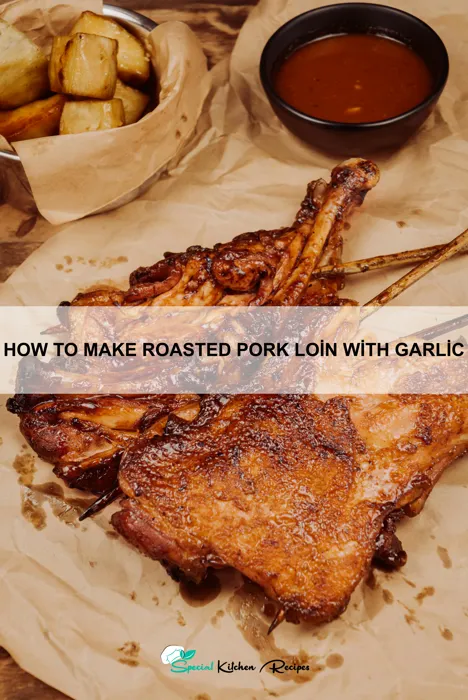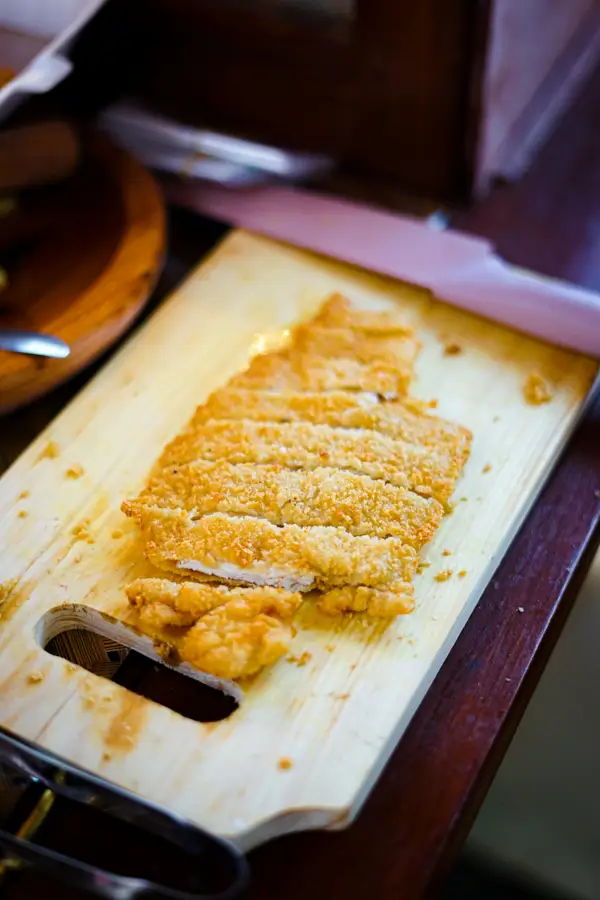The humble pork loin, a cut of meat prized for its tenderness and versatility, boasts a rich history intertwined with human civilization. Evidence suggests pork consumption dates back thousands of years, with domesticated pigs playing a significant role in various ancient cultures. Ancient Romans, for example, were known for their elaborate pork dishes, and pork featured prominently in many celebratory feasts. The specific preparation of roasting, however, evolved over centuries, influenced by regional culinary traditions and the availability of cooking methods. While precise origins are difficult to pinpoint, roasting, as a cooking technique, likely predates written history, relying on the simple application of heat to break down connective tissue and render fat, resulting in a succulent and flavorful end product.
Today, pork loin remains a global culinary staple. According to the USDA, pork is the most consumed meat in the United States, accounting for a substantial portion of the overall meat market. This enduring popularity reflects its affordability, versatility, and suitability for diverse cooking methods, from grilling and frying to, of course, roasting. Roasting a pork loin, specifically with garlic, is a classic preparation that emphasizes the meat’s natural flavors. The addition of garlic, a pungent and aromatic bulb with a history as long as pork itself, adds a layer of savory depth and complexity, enhancing the overall gustatory experience. Garlic’s culinary significance spans cultures and continents; its use in traditional medicine and cuisine dates back millennia, lending its powerful aroma and flavor to countless dishes worldwide.
The recipe we’ll explore focuses on a simple yet elegant approach to roasting a pork loin with garlic. We’ll emphasize techniques that ensure a juicy, tender, and flavorful result, avoiding dryness which can be a common pitfall. The key lies in understanding the pork’s internal temperature and resting it properly after cooking. This method allows the juices to redistribute throughout the meat, resulting in a far superior eating experience. Beyond the basic recipe, we’ll also discuss variations and additions, allowing you to personalize this classic dish and adapt it to your own culinary preferences and dietary needs. Get ready to embark on a culinary journey that celebrates the enduring appeal of pork loin, elevated by the simple yet powerful addition of garlic.
Ingredients and Measurements
This recipe yields a succulent, flavorful roasted pork loin that serves 6-8 people. Accurate measurements are crucial for achieving the perfect balance of flavors and ensuring even cooking. Use a kitchen scale for the most precise measurements, especially for the pork loin, as weight is a more reliable indicator than volume.
Pork Loin: 3-4 pounds bone-in pork loin. Choosing a bone-in loin results in more flavorful and juicy meat. Look for a loin with a good layer of fat, which renders during cooking and keeps the meat moist. Avoid loins that are excessively lean, as they may dry out during roasting.
Garlic: 1 whole head of garlic (approximately 12-16 cloves), separated and peeled. Using a whole head infuses the pork with a deep, rich garlic flavor. If you prefer a milder garlic flavor, you can reduce the amount to 8-10 cloves. For easier peeling, roast the whole head of garlic in the oven for about 40 minutes at 400°F (200°C) before separating the cloves.
Olive Oil: ¼ cup extra virgin olive oil. Use a high-quality olive oil for better flavor. The oil helps to brown the pork and keeps it moist during roasting.
Salt: 2 teaspoons kosher salt. Kosher salt is preferred because of its larger grain size, which makes it easier to control the amount you use. Adjust the salt to your taste, but don’t be afraid to season generously.
Black Pepper: 1 teaspoon freshly ground black pepper. Freshly ground black pepper offers a superior flavor compared to pre-ground pepper. Grind the pepper just before using it to preserve its aroma and pungency.
Fresh Rosemary (Optional): 2 sprigs fresh rosemary. Rosemary adds an earthy, slightly piney flavor that complements the pork beautifully. If you don’t have fresh rosemary, you can substitute with 1 teaspoon of dried rosemary.
Fresh Thyme (Optional): 2 sprigs fresh thyme. Thyme adds a subtle, herbaceous note that enhances the overall flavor profile. Similar to rosemary, you can substitute with ½ teaspoon of dried thyme if needed.
Optional additions: Consider adding other herbs and spices like sage, oregano, or even a pinch of red pepper flakes for a touch of heat. Experiment with different flavor combinations to find your perfect roast pork loin recipe.
Equipment List
Creating a succulent roasted pork loin with garlic requires the right tools for optimal results. This list details the essential equipment, along with recommendations for maximizing your cooking experience. Don’t worry – you likely already have most of these items in your kitchen!
1. Roasting Pan: A large, heavy-bottomed roasting pan is crucial. Aim for a size that comfortably accommodates your pork loin without overcrowding. A 9×13 inch pan is suitable for a 3-4 pound loin, but larger loins will require a correspondingly larger pan, perhaps a 12×17 inch pan or even a roasting rack within a larger pan. Avoid using lightweight pans, as they can lead to uneven cooking and potential scorching.
2. Meat Thermometer: This is arguably the most important piece of equipment. A reliable instant-read meat thermometer is essential for ensuring the pork loin reaches a safe internal temperature of 145°F (63°C) without overcooking. Investing in a good quality thermometer is a worthwhile investment for any cook. Digital thermometers offer quick and precise readings.
3. Chef’s Knife: A sharp chef’s knife (8-10 inches) is needed for trimming excess fat from the pork loin and for prepping the garlic. A dull knife will make the task more difficult and potentially dangerous. Always remember to use caution when handling sharp knives.
4. Garlic Press or Mincer: While you can finely chop garlic by hand, a garlic press or mincer significantly speeds up the process, especially when dealing with a generous amount of garlic cloves (approximately 10-12 cloves for a 3-4 pound loin). A mincer provides more finely minced garlic which distributes more evenly within the roast.
5. Small Bowl: A small bowl is needed for mixing the garlic with any additional seasonings, such as olive oil, salt, and pepper. This allows for even distribution of flavors across the pork loin.
6. Basting Brush (Optional but Recommended): While not strictly necessary, a basting brush is highly recommended for periodically basting the pork loin with pan juices during roasting. This helps keep the meat moist and adds flavor. A silicone basting brush is easy to clean.
7. Tongs or Meat Fork: Use tongs or a meat fork to safely handle the hot pork loin when removing it from the oven and when checking the internal temperature. Avoid piercing the meat excessively as this can lead to moisture loss.
8. Cutting Board: A clean, sturdy cutting board provides a safe and stable surface for prepping the pork loin and garlic.
Preparation of the Pork Loin
Begin by selecting a high-quality pork loin. Aim for a 3-4 pound boneless pork loin roast. Avoid overly lean roasts as they can dry out during cooking. A roast with a little bit of marbling ensures a more tender and juicy final product.
Once you’ve chosen your pork loin, thoroughly rinse it under cold running water and pat it completely dry with paper towels. This step is crucial for achieving a nice, crispy skin. Removing excess moisture prevents steaming and promotes browning.
Next, prepare the garlic. For a 3-4 pound loin, you’ll need approximately 10-12 cloves of garlic. Peel and mince the garlic finely. You can use a garlic press for efficiency, but ensure you don’t over-process it, as this can release bitter compounds. Alternatively, you can thinly slice the garlic cloves for a more rustic presentation.
Now, it’s time to season the pork loin. Generously rub the minced or sliced garlic all over the surface of the roast, ensuring even coverage. Then, season liberally with salt and freshly ground black pepper. Don’t be shy with the salt; it’s essential for flavor development and helps to create a flavorful crust. A good rule of thumb is about 1-1.5 teaspoons of salt per pound of pork loin.
For an extra layer of flavor, consider adding other seasonings. A teaspoon of dried rosemary or thyme, or a sprinkle of paprika, can complement the garlic beautifully. Experiment with different herbs and spices to find your preferred flavor profile. After seasoning, allow the pork loin to rest at room temperature for at least 30 minutes. This allows the meat to come to a more even temperature, resulting in more even cooking.
Finally, preheat your oven to 375°F (190°C). You can place the seasoned pork loin on a rack set inside a roasting pan, or directly on a roasting pan lined with parchment paper for easier cleanup. Roasting on a rack allows for better air circulation, leading to more even browning and crisping.
Preparing the Garlic and Herbs
The flavor of your roasted pork loin hinges significantly on the aromatic garlic and herbs. Proper preparation ensures optimal flavor infusion and avoids any unpleasant bitterness.
We’ll be using approximately 1 whole head of garlic (about 18-20 cloves) and a generous bunch of fresh herbs. For the herbs, I recommend a combination that complements pork beautifully. A good starting point is 2 sprigs of fresh rosemary, 1 sprig of fresh thyme, and 4-5 large sage leaves. Feel free to adjust these quantities based on your personal preference and the size of your pork loin.
Begin by preparing the garlic. The easiest method is to separate the cloves. Gently squeeze the garlic head to loosen the cloves. Then, peel away the papery skin from each individual clove. If you’re short on time, you can use pre-peeled garlic, but freshly peeled garlic offers a superior flavor profile. Once peeled, roughly chop the garlic cloves. Aim for a mix of finely minced pieces and some slightly larger chunks for varied texture.
Next, prepare the herbs. Remove the leaves from the rosemary and thyme sprigs by gently pulling them between your fingers or using a small paring knife. Roughly chop the herbs, aiming for a similar size to the chopped garlic. Avoid over-chopping as this can lead to a loss of their delicate flavors. For the sage leaves, depending on their size, you might want to halve or quarter them for even cooking.
Important Note: While some recipes suggest mincing the herbs very finely, slightly larger pieces allow for a more pronounced herbal flavor and better visual appeal in the finished dish. The goal is to distribute the garlic and herbs evenly throughout the pork loin, allowing their flavors to infuse during the roasting process.
Once your garlic and herbs are prepared, set them aside in a small bowl. You’ll be using this aromatic mixture to generously rub the pork loin before roasting. This ensures a flavorful crust and tender, juicy meat.
Seasoning the Pork Loin
Seasoning your pork loin properly is crucial for achieving a flavorful and juicy roast. Don’t be shy with the seasoning; a generous application will ensure that every bite is bursting with flavor. We’ll be using a simple yet effective garlic-herb blend, perfectly complementing the richness of the pork.
Begin by patting your pork loin completely dry with paper towels. This is a vital step often overlooked. A dry surface allows the seasoning to adhere properly and develop a delicious crust during roasting. If the surface is wet, the seasoning will simply slide off.
For a 3-4 pound pork loin, you’ll need approximately:
- 2 tablespoons kosher salt (or 1 tablespoon table salt)
- 1 tablespoon freshly ground black pepper
- 2 tablespoons garlic powder
- 1 tablespoon dried rosemary
- 1 tablespoon dried thyme
- 1 tablespoon paprika (sweet or smoked, to your preference)
In a small bowl, combine all the dry seasonings. Ensure they are thoroughly mixed to create an even distribution of flavor. You can use your fingers to gently break up any clumps of herbs or spices.
Now, generously rub the seasoning mixture all over the pork loin. Don’t just sprinkle it on; use your hands to massage the seasoning into the meat. This helps to penetrate the flavors deeper into the pork, resulting in a more flavorful and evenly seasoned roast. Pay particular attention to the edges and any crevices.
Once the pork loin is completely coated, you can choose to let it sit at room temperature for 30 minutes to an hour. This allows the seasoning to further penetrate and the pork to come to room temperature, which contributes to more even cooking. However, if you’re short on time, you can skip this step.
After seasoning, your pork loin is ready for roasting. Remember to adjust the seasoning quantities according to the size of your pork loin, adding more seasoning for larger cuts. Experiment with different herbs and spices to find your perfect blend. Enjoy!
Roasting the Pork Loin
With your garlic-rubbed pork loin ready, it’s time to move on to the roasting process. Preheat your oven to 400°F (200°C). This high initial temperature helps to sear the outside of the loin, creating a delicious crispy crust while keeping the inside juicy and tender. Ensure your oven rack is positioned in the center of the oven for even cooking.
Place the seasoned pork loin in a roasting pan. You can use a regular roasting pan or, for easier cleanup, a roasting pan with a rack. If using a rack, it allows for better air circulation around the meat, promoting even browning. Do not overcrowd the pan; this can hinder proper roasting and result in uneven cooking.
Now, it’s time to roast! For a 3-4 pound pork loin, the roasting time will generally be around 1 hour and 15 minutes to 1 hour and 30 minutes. However, the most accurate way to determine doneness is to use a meat thermometer. Insert the thermometer into the thickest part of the loin, avoiding the bone. The pork loin is cooked through when the internal temperature reaches 145°F (63°C). Do not rely solely on the cooking time; always use a thermometer.
During the roasting process, you can baste the pork loin with its own juices every 20-30 minutes. This helps keep the meat moist and adds flavor. You can use a baster or simply spoon the juices over the top of the loin. Avoid opening the oven door too frequently, as this can cause temperature fluctuations and affect the cooking time.
Once the pork loin reaches the desired internal temperature of 145°F (63°C), remove it from the oven. Let the pork loin rest for at least 10-15 minutes before carving. This allows the juices to redistribute throughout the meat, resulting in a more tender and flavorful final product. Cover the loin loosely with foil to prevent it from drying out during this resting period.
After resting, carve the pork loin against the grain into slices. This will make the meat easier to chew and more tender. Serve immediately and enjoy your delicious, perfectly roasted garlic pork loin!
Note: Cooking times may vary depending on the size and shape of your pork loin. Always use a meat thermometer to ensure it reaches a safe internal temperature.
Recommendations
For optimal flavor and texture, allow the roasted pork loin to rest for at least 10-15 minutes after cooking before carving. This allows the juices to redistribute, resulting in a more tender and flavorful final product. Carve the pork loin against the grain for the most tender slices.
Serving Suggestions: This Garlic Roasted Pork Loin is incredibly versatile. Serve it as the star of a celebratory dinner, or enjoy it for a casual weeknight meal. It pairs beautifully with a variety of sides. Consider serving it with creamy mashed potatoes, roasted root vegetables (carrots, parsnips, potatoes), or a vibrant green salad. A simple pan sauce made with the pan drippings, a touch of white wine, and some fresh herbs elevates the dish even further.
Storage: Properly stored, leftover roasted pork loin will last for 3-4 days in the refrigerator. Be sure to store it in an airtight container to maintain freshness and prevent it from drying out. You can also freeze the leftovers for up to 3 months. To freeze, wrap the pork tightly in plastic wrap, then place it in a freezer-safe bag or container.
Complementary Dishes: To create a well-rounded and delicious meal, consider these complementary dishes: A simple apple chutney provides a sweet and tart counterpoint to the savory pork. Roasted asparagus or green beans offer a fresh, contrasting texture and flavor. For a heartier meal, try pairing it with a creamy mushroom risotto or polenta.
Nutritional Information (Approximate per serving, based on a 6-serving recipe): Calorie count will vary depending on the size of the pork loin and the amount of added fat. However, a reasonable estimate is 350-450 calories per serving. The nutritional content will also vary, but you can expect a good source of protein and some iron. For precise nutritional information, use a nutrition calculator and input the specific ingredients and quantities used in your recipe. Please note that this is an estimate and may not be completely accurate.
Important Note: Always ensure your pork is cooked to a safe internal temperature of 145°F (63°C) to prevent foodborne illness. Use a meat thermometer to check the temperature in the thickest part of the loin.





